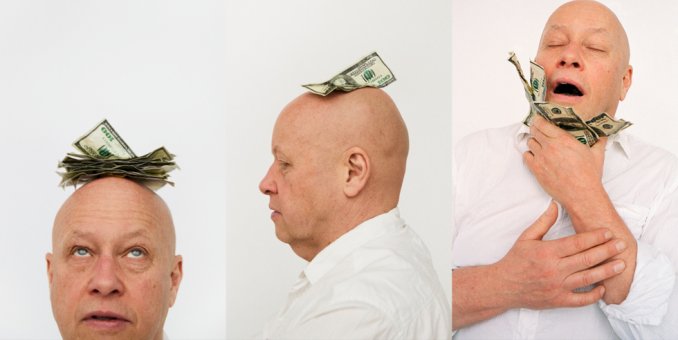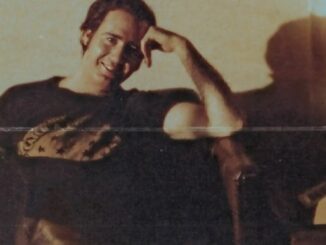
Art, outright fraud or expensive practical joke?
That’s the question posed by documentarian Ole Juncker’s new film Take The Money And Run, and the answer just might be a bit of all three.
In 2021, the Kunsten Museum in Copenhagen, Denmark, commissioned an art piece from noted conceptual artist Jens Haaning as part of a planned exhibit. The piece would consist of two giant frames featuring both Euro and Danish bills representing the annual average wages for Austrian and Danish workers. The museum lent Haaning approximately 500,000 Danish kroner, approximately $50,500 US. But Haaning delivered empty frames, keeping the money for himself. When the outraged Kunsten demanded he return the money, Haaning replies that if he were to do that it would cease to be art.
What followed were applause and accusations from both within and outside the art world. Some saw it as an audacious or imaginative statement while others just thought that Haaning had stolen the money outright from under the museum’s nose. Unsurprisingly, a lawsuit soon followed.
Take The Money And Run follows the story of Haaning from that first burst of notoriety following the unveiling of the eponymous art piece to the unexpected outcome of the civil case between the artist and the Kunsten Museum. Along the way we see him discuss, sometimes heatedly, with journalists his intentions with his art. But Haaning’s story here isn’t just about a bit of artistic puckishness though. It also delves into the artist’s own mental health issues as well as his own financial instability that most likely in part stems from those issues. Are his lack of liquidity issues a contributing factor to the genesis of “Take The Money And Run”? There are indeed times when Haaning’s motivations may appear more pragmatic than artistic.
Of course, the film does raise the usual questions conceptual art pieces like “Take The Money And Run” do – Is something like this actually art? To an average person who might have a limited view of what art could be beyond painted landscapes and old portraits, digging into the idea of what Haaning states the piece is about could be challenging. If anything, “Take the Money and Run” feels a bit more accessible compared to a few of Haaning’s other conceptual pieces mentioned in the film. Indeed, at one of the many points in the film where Haaning is casting about for some quick cash, he bemoans that he has 80 million kroner ($8.1 million US) in unsold work. But is there even that value there if no one wants to buy it?
Early on in the documentary, Hanning jokes, “I’m sure that one day my story will be made into a Hollywood film.” Well, no announcements have been made in the trades as of this writing, so for now, we do have this thought provoking documentary look at the artist, his art and the forces that sometimes raging around both.




